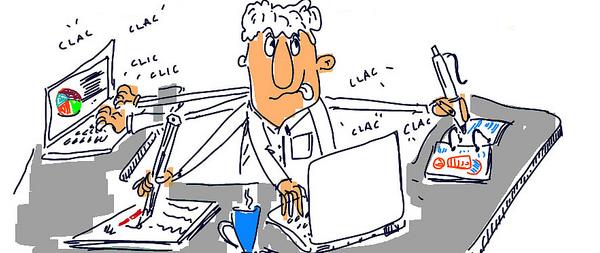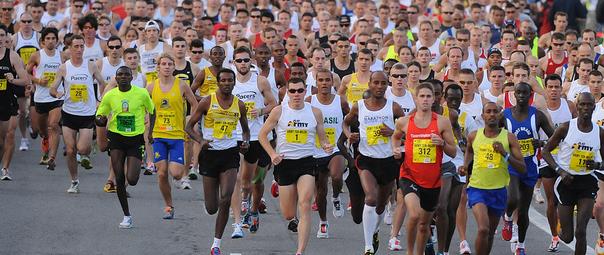Have you ever thought about accessibility in science? Let’s be honest—we scientists don’t always present our science in ways that are accessible to everyone. Nor is lab-based science always accessible.
I want to explore what accessibility is and highlight how we can all make science more accessible and inclusive.
What is Accessibility?
The topic of accessibility is fraught with nuance and complexity. The word “accessibility” can mean different things to different people in different contexts. According to Alistair Duggin, “something can be accessible to some people while being inaccessible to others”. (1) With this in mind, and because, as Dr. Julia Sarju states—language matters, (2) I’ve listed some key definitions of terms we’ll be mentioning in this article:
Term | Definition |
Disability | Any physical or mental condition that makes it more difficult for a person to do certain activities and interact with the world around them.(3) |
Impairment | A long-term limitation in a person’s physical, mental, or sensory function.(3) |
Accessibility | Providing an environment in which a person can do the tasks they need to do, in a similar amount of time, and with a similar level of effort as someone that doesn’t have a disability.(1) |
What is Disability?
Many aspects of everyday life are built for the mythical “average” person with perfect vision, hearing, and physical ability. In reality, very few people are like this. Many people live with visible and invisible disabilities. (2)
Some conditions fluctuate while others are chronic. Vision and hearing can range from almost perfect to nonexistent, with a full spectrum in between. Memory and literacy levels can also vary for different reasons, including neurodiversity [e.g., autism, Asperger’s syndrome, attention deficit hyperactivity disorder (ADHD), and dyslexia], poor mental health, fatigue, and stress.
Physical ability also varies between individuals because of differences in mobility, dexterity, and strength. Most of us also experience temporary (i.e., due to illness or injury) or situational disabilities (i.e., poor hearing in a noisy room or poor vision in bright sunlight). (2,3)
Is the Science Research Community Accessible?
Disability shouldn’t limit accessibility in science—but it does. (4) Diversity of thought and life experiences are essential to promoting good science, but if people who want to contribute to science are kept out of it due to lack of access, this isn’t good for science. (5) We should all be concerned about this.
Think about the lab you work in—is it accessible, for example, to someone in a wheelchair? Do you have access to ergonomic pipettes suitable for someone with repetitive stress injury (RSI), painful joints, or arthritis? Have you been to a conference that provides different accessibility options for attendees? For me, the answer is no, and this is likely the same for many of you.
Accessibility in the Lab
Because experiences of disability are broad, there are various ways in which science is inaccessible. I’ll give some examples below.
Physical Accessibility
Traditionally, wet labs have been designed for people with no physical challenges. (6) People who find it difficult or cannot sit on a lab stool and those who need to use walking aids need adjustable benches and wheelchair access to the labs. (7) While this requires additional resources and planning, it’s certainly doable and should be considered in all research institutes and organizations.
Neurodivergent Accessibility
Neurodivergence is a term used to describe someone who thinks, learns, or behaves in a way that is different from what is considered “normal”. Neurodivergent disabilities are not always visible.
People with autism can be extremely sensitive to their environment. This means that their senses (i.e., hearing, touch, sight, smell, and taste) can be overstimulated.
Employers and PIs could provide Sunflower lanyards (8) or JAM (Just a minute) (9) cards to improve accessibility in the lab and even at conferences. Both cards are recognized symbols of hidden disabilities or communication barriers.
An individual can use these cards to let others know they need extra time and understanding in a simple and private way if they get overwhelmed or are in a situation where they can’t explain themselves.
While there’s no obligation on an individual to disclose their disability, in the case of hidden disabilities like autism, without disclosure, employers and organizations might not be able to implement the necessary changes to improve accessibility. (10)
Employers should encourage disclosure, provide safe spaces to do so, and be willing to follow through with tangible actions. For example, flexible working can let people work early or late when there are fewer people around and fewer stimuli. Or employers can change harsh lab lights for something softer.
To learn more about neurodivergence, you may want to read Dr Camilla Pang’s book Explaining Humans in which she writes about her experiences as a scientist with autism spectrum disorder.
Science Communication Accessibility Issues
Colors and Fonts in Presentation Slides
One of my biggest pet peeves is what Carla Albinagorta calls “rainbow presentations” (i.e., slides with eye-watering bright colors, like lime green). It’s just so unnecessarily bright!
Colorblindness
About 1 in 20 people have some form of color blindness and cannot tell the difference between specific colors. (11,12) There are different types of color blindness, including red-green (challenging to distinguish between red and green), blue-yellow (challenging to distinguish between blue and green, and yellow and red), and complete color blindness, which is rare. (13)
Therefore, it’s essential to consider what color pallet you use for your figures and presentation slides. Some software (e.g., GraphPad Prism) now comes with several “colorblind safe” color palettes. To make your data more accessible, you can check whether your figures are “colorblind safe” using this handy color blindness simulator, or you can use these accessible color pallets.
Problematic Fonts
Font colors and styles can also negatively affect how some people can access and understand the data, with font style being particularly complex for some. Serif fonts (e.g., Times Roman) are generally less readable for some individuals because they have tails and ticks at the ends of some letters, making them more difficult to read. Therefore, stick to sans-serif fonts (e.g., Arial). (14)
Some studies have even suggested that dyslexic readers prefer more “humanist” fonts (i.e., fonts with unique forms for the letters b and d). (14) Several unique fonts, including Sylexiad, Open Dyslexic, and Dyslexie, have been developed to help dyslexic readers. (14,15) Before selecting your font for your next presentation or even grant proposal, you might want to select one from this list of accessible fonts.
Promoting Accessibility in Research
Often, it is a lack of awareness that makes things inaccessible. Therefore, institutions should train managers and people in positions of authority to help them understand the different aspects that affect accessibility (e.g., neurodiversity, physical disabilities, and impairments) and how to support people in the lab.
Accessibility in Science: What Can You Do Today?
We can all do our part to promote positive changes that improve accessibility in science. But what immediate actions can you take? We’ve listed some suggestions below:
- Consider color blindness and neurodivergency in your presentations.
- Consider using fonts suitable for dyslexic readers in your presentations and grant proposals.
- Read Dr. Julia Sarju’s article on how we can achieve “…Genuine Inclusion of Disabled Scientists and Science Students…”. (2)
- Take a look at Dr Camilla Pang’s book Explaining Humans to learn more about autism spectrum disorder from a scientist’s point of view.
- Read your institution’s information. Most institutions have guidelines, policies on accessibility, and provision of assistive technologies and services for disabled users—inform yourself by reading these guidelines and policies.
- Speak to your supervisor, lab managers, and colleagues!
Please raise awareness of the issues of accessibility in science, and if you have any suggestions for what we can do to increase it, feel free to put them in the comments below.
References
- What we mean when we talk about accessibility – Accessibility in government. [Accessed 2022 Jun 7].
- Sarju JP. (2021) Nothing About Us Without Us – Towards Genuine Inclusion of Disabled Scientists and Science Students Post Pandemic. Chemistry – A European Journal. 27(41):10489–94.
- Types of Disabilities | Usability & Web Accessibility. [Accessed 2022 Jun 7].
- Disability shouldn’t limit accessibility in science. (2021) Commun Biol. 4(1):1–1.
- We need diverse representation in STEM, and social media can help. [Accessed 2022 Jun 7].
- 3. Barriers faced by students with disabilities in science laboratory and practical space settings. [Accessed 2022 Jun 7].
- Tuosto K et al. (2020) Making science accessible. Science 367(6473):34–5.
- Hidden Disabilities. A symbol for non-visible disabilities. [Accessed 2022 Jun 7].
- Jam Card. Just a minute of patience. [Accessed 2022 Jun 7].
- Hidden Disabilities. Non-visible disabilities in the workplace. [Accessed 2022 Jun 7].
- NIH. National Eye Institute. Color Blindness. [Accessed 2022 May 21].
- Nichols D. Coloring for Colorblindness. [Accessed 2022 Jun 7].
- NIH. National Eye Institute. Types of Color Blindness. [Accessed 2022 Jun 7].
- Full Fabric. How to design visual learning resources for neurodiverse students. [Accessed 2022 Jun 7].
- Sylexiad HR. (2008) A typeface for the adult dyslexic reader. Journal of Writing in Creative Practice. 1(3):275–91.




